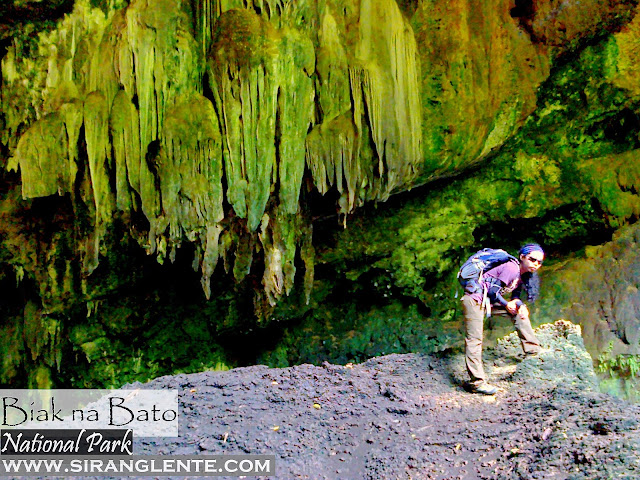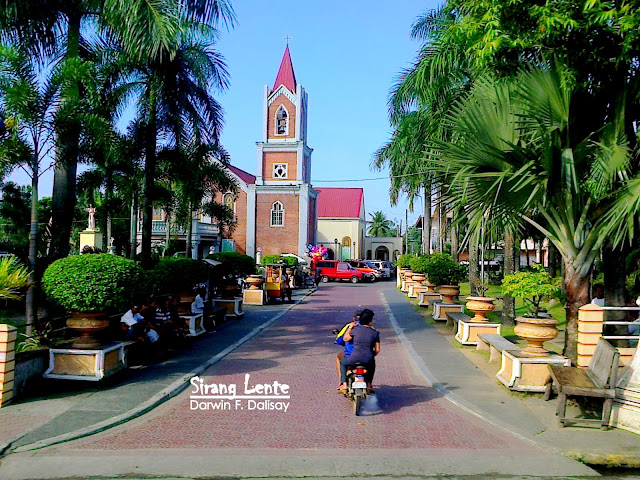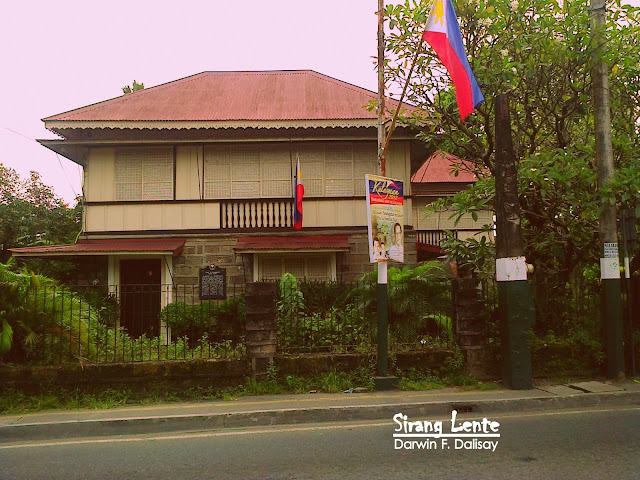
1. Barasoain Church
In Philippine history, Bulacan is one of those provinces with a lot of happenings and until today, the historical sites are still standing. Let's start with Barasoain Church, also known as Our Lady of Mt. Carmel Parish, a Roman Catholic church built in 1630 in Malolos City, Bulacan. From Bulacan Provincial Capitol, we rode in a tricycle to and alighted in front of the church. It was early in the morning so we had time taking photos without people on the background. Disadvantage? The church was open but the museum was closed. I was stunned by its structure, thus, standing in front of the facade was remarkable.

2. Biak na Bato National Park
The Biak na Bato National Park in San Miguel, Bulacan, is one of the top travel destinations in the province because of its historical contribution in the Philippine republic. "Biak na Bato" or split of boulder is where Gen. Emilio Aguinaldo signed the Malolos Republic (first Constitution of the Philippines). Aside from its historical background, tourist and students visit this park to relax, breathe some fresh air, and witness the beauty inside the caves, especially the stunning Bahay Paniki Cave, the highlight of the area. By the way, it was declared as national park in 1937 by former president Manuel L. Quezon.

3. Malolos Cathedral
Malolos Cathedral or the Minor Basilica of Our Lady of Immaculate Conception is one of the historical churches in the Philippines, located in Malolos City, Bulacan. The construction of this church started in 1814 and was finished in 1817, under Fray. Melchor Fernández. Like most of the century old churches in the country, Malolos Cathedral was severely damaged by earthquakes. Today, it is the seat of the Diocese of Malolos and has been the bastion of faith for the past centuries.

4. San Ildefonso Church
San Ildefonso Church is one of the famous destinations in the town, especially for Roman Catholics. According to some residents near this church, the construction of this church and convent started 1691 but due to some economic problems encountered in 1734, it wasn't finished. The style of the façade is simple, almost has the same appearance with the other old churches in the Province.

5. Baliuag Church
According to the Spanish records, it was Fr. Juan de Albarran, OSA who was assigned as the parish priest of Baliuag Church in 1733, the year that the church was officially began. Then, between 1769 to 1774, the second church was built by Father Gregorio Giner. The structure of the church was completed in 1801. However, in 1863, the strongest earthquake damaged the church but was rebuilt in 1870.

Bulacan Provincial Capitol is the place where the other government institutions/offices can be found. It is also the place where you can find the office of the most powerful man in the government of the province. This compound is the location of the leading university in the province and the provincial museum which houses the history of Bulacan.

7. Jose Cojuangco Mansion
This is the old and original house of Jose Chichioco Cojuangco (July 3, 1896-August, 1976) he was the former Representative of the 1st district of Tarlac, Philippines from 1934 to 1946. He is one of the roots of the Cojuangco clan. He is the father of the first woman President of the Philippines Corazon Aquino and grandfather of President Benigno Aquino III.This historical landmark is situated in Paseo del Congreso St., Malolos City Bulacan just few meters from Barasoain Church.

8. Casa Real Shrine
Casa Real Shrine was built in 1580, became the town’s Casa Tribunal, Ayuntamiento, and Casa Presidencia Municipal and was the residence and Office of the Gobernadorcillo during the Spanish time. It was the site of the Imprenta Nacional of the First Republic, where the revolutionary organs La Independencia, El Heraldo de la Revolucion, Kalayaan and Kaibigan ng Bayan were printed., the printing press of the 1896 Constitution and the Heraldo de Revolucion.

9. Plaridel Church
Plaridel Church or Quingua Church was established in 1581, that's more than four centuries ago and it is one of the oldest Hispanic churches in Bulacan. Its structure is a barn-style Baroque with Moorish ornamentation. During the British occupation (1762-1763), this church was the place where the money and jewels of San Agustin, in Intramuros, Manila, were kept. There is an octagonal chapel locally called the Simborio chapel surrounded by artistic windows. The people in this area, with the help of the local government, are preserving it's historical value. Also, "Pintakasi ng mga Caballero" or a fiesta for the horse lovers are celebrated in Plaridel, Bulacan.

10. Guiguinto Old Train Station
The Guiguinto Old Train Station was built in 1661, the Estacion de Guiguinto (Guiguinto Train Station) is the towns most acclaimed historical landmark and heritage site. It was upon this that the Katipuneros (Filipino guerillas during the Spanish Regime) ambushed a train from Dagupan, killing six friars, including the parish friar of Guiguinto, Fr. Leocadio Sanchez, and the Spanish doctor. The incident inspired Severino Reyes to author the novel "Opera Wlang Sugar" which was later made into a movie entitled "Walang Sugat." - source: www.bulacan.gov.ph

11. Buchiron
Taste and enjoy their local delicacy called "Buchiron." Filipinos make something beneficial from all of the parts in a dressed chicken, so aside from the street foods like isaw, locals of Bulacan came up to an idea of creating a signature delicacy and they call it bucheron. Buchiron is made from chicken gizzard or balun-balunan in tagalog.

12. San Rafael River Adventure
San Rafael River Adventure offers a remarkable, unique and modern way of camping - this generation calls it "glamping" or glamorous camping. Leaving your work and relaxing somewhere is the perfect way of spending your rest days, agree? But where is that "somewhere?" and "how?" I want to share another stunning tourist attraction and a must-visit destination in Bulacan. With great facilities, San Rafael River Adventure can definitely give you a WOW factor: from the gorgeous surroundings, relaxing ambience, water activities, and excellent amenities.
HOW TO GET TO BULACAN: On EDSA Cubao we rode in a Baliuag Bus bound for Bulacan and alighted in a tricycle terminal by the highway (I can't remember the name of the place but the bus conductor told us that it's the place where we can ride a tricycle to Biak na Bato National Park). Then, rode in a tricycle to Biak na Bato. After our Biak na Bato adventure, our guide brought us back to the highway (we paid her extra for her motorcycle gasoline). Then we crossed the highway and rode in a bus with Manila signboard and alighted to Cruz na Daan and rode in a jeepney to San Ildefonso and Baliaug Church.
Second day, we visited the provincial capitol, and walked on the streets to Barasoain Church, Jose Cojuanco Mansion, Casa Real Shrine, and Basilica Minore Immaculada Concepcion. Then went back to the capitol and rode in a jeepney to Plaridel, Bulacan. Beside Plaridel Church, we rode in a jeepney to Guiguinto, Bulacan and alighted in front of a commercial supermarket and rode in a tricycle to the old train station.
Going back to Manila: in front of the commercial supermarket, we rode in a jeepney and alighted in a mini-terminal, by the highway, bound for Manila (drivers know this spot, don't hesitate to ask question). At the mini-terminal, we rode in a van to EDSA-Cubao.
CLICK TO VIEW AFFORDABLE PLACES TO STAY IN BULACAN
